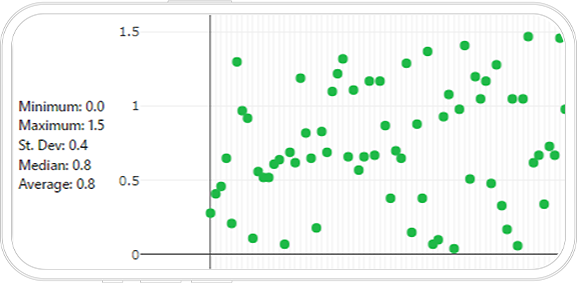Automated detection of gap length and quantity within each plot row provides invaluable insights for optimizing yield estimation and harvesting decisions in agriculture.
This enables informed decisions on row selection for harvesting, maximizing yield by focusing on rows where larger gaps indicate greater plant growth potential, ensuring optimal crop uniformity and productivity.

The optimal time to apply GAP detection analysis is during the growth stages of V2 to V4 in crops such as corn, sunflower, and sugar beet.
| Crop name | Vegetation phase |
|---|---|
| Corn | V2-V4 |
| Sunflower | V2-V4 |
| Sugar beet | V2-V4 |

No credit card required
GAP Length provides data for all crops planted in rows. The most common crops that are planted in this way are corn, sunflower, sugar beet, and potatoes.
Plants should be at the recommended growth stage: corn: V3 – V8, sugar beet BBCH 15 – BBCH 19, sunflower: BBCH 14 – BBCH 20, potatoes BBCH 16 – BBCH 29.
The resolution should be 1-1.5 cm/pixel
Gap length data provides insights at both the plot and row level. At the plot level, you can access information including the minimum gap length, maximum gap length, average gap length, total gap length, and the total number of gaps across the entire area. For row-level details, the data includes the number of gaps and the gap lengths for each row, offering a detailed breakdown of gaps within the planting rows.

Agremo's AI solution turns DJI's drone imagery into actionable insights, and its recipe maps make our AGRAS drone a truly intelligent and precise spraying tool." The integration of the Agremo platform between Agremo and the DJI drone is a turnkey solution for precision agriculture.

The biggest benefit for farmers who use drones and Agremo reports is that they increase their yields, reduce costs or improve their productivity. In the end, all these benefits are lead to extra profits.

Agremo Stand Count analysis shows how successful seeding was and how many plants farmers will be able to harvest. Withal, it can help to apply different sowing standards in different parts of the plot, in order to achieve the highest yields.